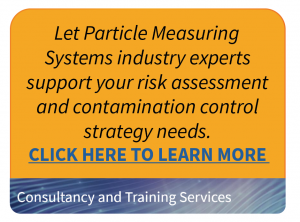Set up and Process Interventions on a fill line are two of the most difficult operations to overcome if they are not designed to properly minimize impact to the product and the environment in the early stages of Isolator/RABS design. Set Up of the fill line poses a significant risk of introduction of contaminants because many materials are introduced to the clean area by the operators. Leveraging Quality by Design helps proactively address these issues.
These can be minimized with a thorough Process Optimization study early in the project. Process interventions (via isolator gloves and tools) must be well thought out in advance since they are the most difficult to retrofit. Read on to see how these production operations can be mitigated with a thorough Quality by Design analysis.
Problems with Set up and Process Intervention on fill lines designed without a Quality by Design solution:
Set-up – Problem:
Over-complicated set-up operations accommodating the equipment after the fact leads to an increased risk of contamination due to incorrect application of aseptic technique.
Process Interventions – Problem:
When gloves and tools are positioned at the wrong/non-ergonomic places to be effectively used in the isolator, it can be very difficult and expensive to rework these features. This situation also leads to inefficiencies in the process and unnecessary movement can lead to material shedding and contamination control issues.
Solutions for Set up and Process Interventions designed into fill lines designed with a PMS Quality by Design solution:
Set-up – Solutions:
- The Set Up phase of production introduces the most risk of contamination to the process because of new materials being introduced and increased movement of supplies and personnel in the area. A mock activities and process optimization should be performed to highlight the most efficient and least impactful movement of materials and personnel.
- A determination must be made about how to manage the removable parts with respect to the following categories:
- Cleaning – Is clean in place enough, are they removable?
- Sterilization – Is clean in place enough, are they removable?
- Equipment flow – Is the necessary equipment and parts easily accessible without excessive movement and manipulation?
- Material handling – Are the necessary materials easily accessible without excessive movement and manipulation?
- Thoroughly evaluate the cost of contamination vs. the financial cost in the implementation of disposable kits for product sterilization. Note that the risk of contamination may have a far higher cost than the expense of the disposables.
- In the case of decontamination cycles, a determination must be made based on scientific data regarding how to place the materials inside the isolator during the decontamination cycle to ensure thorough cleaning of the parts and the unit.
Process Interventions – Solution:
- Glove positioning to easily reach critical positions should be evaluated, modeled and implemented in the design of the equipment to minimize excessive movement and material shedding.
- A list of critical process interventions should be complied along with how to manage and navigate the actions to minimize impact to the product and the environment.
In the next blog in this series we will examine what Environmental Monitoring on a new fill line looks like with and without Quality by Design implemented at the design phase. These examples come from real-world applications experienced by the Particle Measuring Systems’ Advisory Services Team. Our team has over 70 years of collective experience working in and advising cleanroom users around the world.
Learn more about how our Contamination Control Advisory Services Team can help you identify problems and suggest solutions to preserve the high quality of your products and processes.
Want to read more? Jump to other released posts in this series:
- Part 1 of 6: Intro and Regulatory
- Part 2 of 6: Surrounding Areas
- Part 3 of 6: Cleaning and Disinfection
- Part 4 of 6: Set up and Process Interventions (You are here!)
- Part 5 of 6: Environmental Monitoring
- Part 6 of 6: Activity Organization
Learn more… Get the full paper here.


